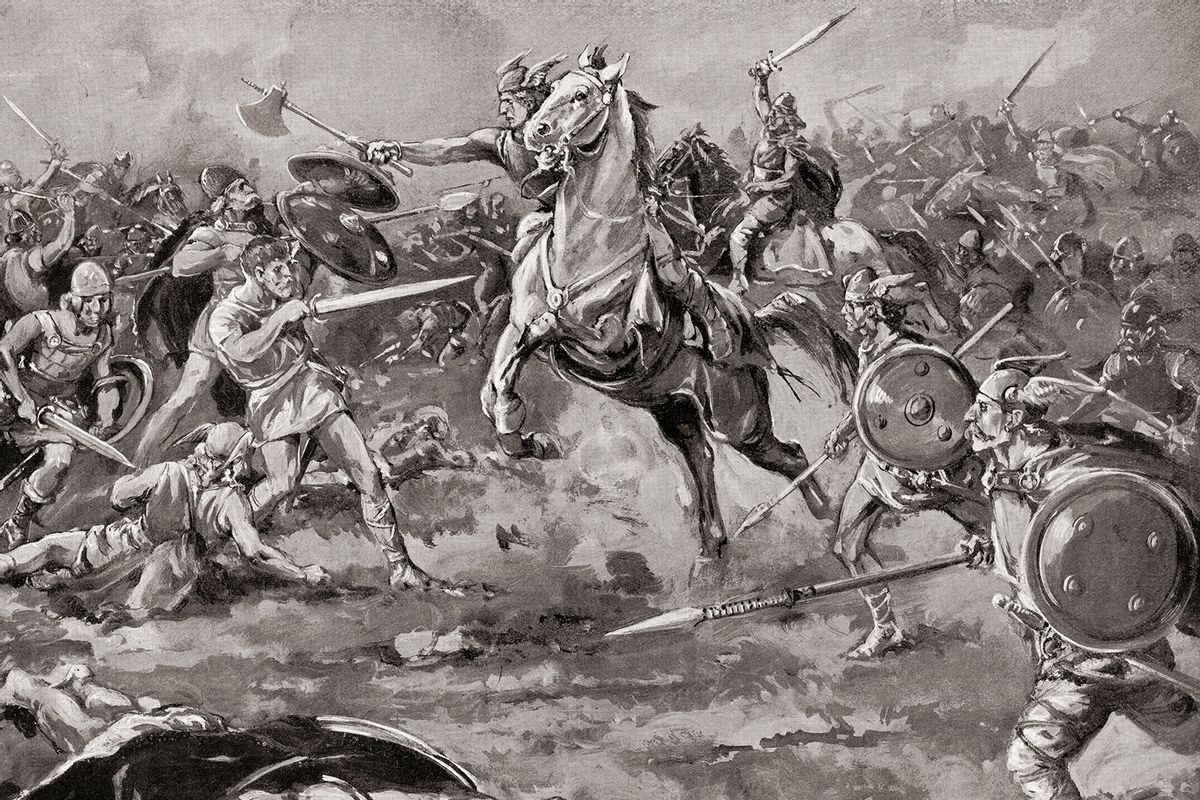The fall of the Roman Empire roughly 1500 years ago has attracted uncountable theories for what caused it. A predominant hypothesis is that roving bands of invaders overwhelmed Roman settlements across Europe and Central Asia, spreading violence and destruction wherever they went. These pressures were too great for the Empire to withstand, and so it collapsed.
A nomadic, pastoralist people known as the Huns are particularly implicated in usurping this superpower. Their fierce cavalries struck fear in the hearts of anyone unfortunate enough to cross their path. However, the motives of the Huns is still somewhat of a mystery. Most historical accounts depict these people as barbaric and ruthless, with an insatiable lust for blood and gold.
"The Huns' apparently inexplicable violence may have been one strategy for coping with climatic extremes."
But most of these descriptions don't come from firsthand accounts — more often Roman elites — and attempts to paint the Huns as subhuman may have been politically motivated. A new paper in the Journal of Roman Archaeology suggests that climate change may have been a driving factor for these raids between the 430s and 450s AD. Specifically, a few decades of drought pushed the Huns to the brink, forcing them to brutalize others in pursuit of survival. They weren't necessarily greedy or violent — though they may have been that, too — but they were mostly just starving.
The authors, associate professor Susanne Hakenbeck from Cambridge's Department of Archaeology and Professor Ulf Büntgen from the university's Department of Geography, argue that "the Huns' apparently inexplicable violence may have been one strategy for coping with climatic extremes within a wider context of the social and economic changes that occurred at the time." Ominously, that sentence has parallels to the geopolitical situation and climate change today.
To back up this argument, the researchers relied on analysis of tree rings, which are the bark outgrowths of plants that form slowly and can tell scientists a lot about the past. They also relied on archaeological and historical evidence, such as analysis of skeletons recovered from the region. The data paints an interesting picture of Europe 1500 years ago, which was plagued by stretches of unusually dry summers. This would have affected the availability of grazing land for livestock, as well as agricultural stability. Thus, the Huns were spurred to shift from herders to raiders.
Access to food is an overlooked aspect as a motivation for war.
"Tree ring data gives us an amazing opportunity to link climatic conditions to human activity on a year-by-year basis," Büntgen said in a statement. "We found that periods of drought recorded in biochemical signals in tree-rings coincided with an intensification of raiding activity in the region."
Access to food is an overlooked aspect as a motivation for war. In fact, war and famine are both deeply linked, as described in detail in the 2019 book "Food or War" by climate scholar Julian Cribb, who describes the human jawbone as the "most destructive object on the planet." Cribb links nearly every major conflict in history, from the 30 Years' War to World War II, to having some link to food scarcity as an incentive for warfare. The Huns may be no exception.
"Between about 150 AD and 400 AD weather conditions cooled and deteriorated with temperatures reaching unprecedented lows in what became known as the 'Late Antique Little Ice Age,'" Cribb wrote. "This had a compounding effect on the Roman food supply and economy, and especially on the ability of Rome to pay and feed its legions … Scholars have also found that periods of drought correlate strongly with the assassinations of 25 Roman Emperors and unrest among Germanic tribes between 27 BC and 476 AD."
Hakenbeck and Büntgen note that it would be "problematic to link historic events to climatic conditions in a way that implies a simple cause-and-effect. Nevertheless," they write, "the climatic fluctuations of the period, in particular the dry summers from 420 to 450 CE, would likely have had an impact on both agricultural and pasture carrying capacities, at least in areas that were not directly in the moisture-rich floodplains."
In other words, history is complex and tidy narratives may not do it justice. However, the role of climate as an author of history is often overlooked and there are important correlations that deserve more scrutiny Hakenbeck and Büntgen argue. They point to the most devastating Hunnic attacks occurring in 447, 451 and 452 AD, which coincided with extremely dry summers.
"People living in the Carpathian Basin tried a range of strategies to buffer the effects of prolonged summer droughts," Hakenbeck and Büntgen write. "They flexibly changed their subsistence economy between herding and farming, and some — Hunnic war bands — also changed their social and political organization in favor of raiding and extraction of gold."
This may have not been a winning strategy. After all, Hakenbeck and Büntgen write, "just a few decades after their appearance in central Europe, the Huns had disappeared."
Want more health and science stories in your inbox? Subscribe to Salon's weekly newsletter The Vulgar Scientist.
We may be seeing a little bit of history repeating itself. Europe recently experienced its hottest summer on record, which has been devastating for some farmers in the region. Unlike the droughts in the region 1500 years ago, which were natural abnormalities, human activity is what is accelerating the current climate crisis. It doesn't seem likely that agricultural collapse this time around would spur anyone to start raiding villages again. But it could worsen the ongoing global refugee crisis and, as Cribb warns, lead to more war on a much more massive scale. We should look to history to avoid the perils of the future and the Huns are a good example of what not to do.



Shares